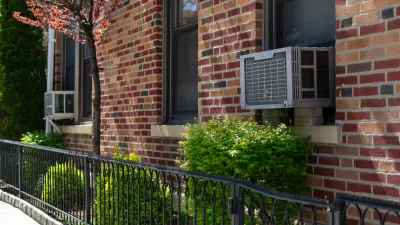The law calls for heat mitigation measures when temperatures exceed 88 degrees.

A new state law in New York will ensure students and staff in schools are kept safe from extreme heat. “By setting clear guidelines for extreme heat conditions, the bill will help schools ensure their spaces are conducive to student learning, reduce unnecessary disruptions, and provide for the health and safety of all those in their buildings,” according to a WBEN article by Brayton J. Wilson.
“In June, Gov. Hochul announced the release of the Final Interagency Extreme Heat Action Plan, which advanced her directive to address extreme heat impacts on disadvantaged communities and on New Yorkers with increased risk of harmful health effects.”
The new law establishes a maximum temperature of 88 degrees and defines extreme heat condition days. “In addition, school districts will be required to take action to relieve heat-related discomfort when classroom temperatures reach 82 degrees. Such actions can include turning off overhead lights, pulling down shades or blinds, turning on fans, opening classroom doors and windows, turning off electronics, and providing water breaks.”
FULL STORY: Gov. Hochul signs bill to protect students, staff at schools from extreme heat

Trump Administration Could Effectively End Housing Voucher Program
Federal officials are eyeing major cuts to the Section 8 program that helps millions of low-income households pay rent.

Planetizen Federal Action Tracker
A weekly monitor of how Trump’s orders and actions are impacting planners and planning in America.

Ken Jennings Launches Transit Web Series
The Jeopardy champ wants you to ride public transit.

Rebuilding Smarter: How LA County Is Guiding Fire-Ravaged Communities Toward Resilience
Los Angeles County is leading a coordinated effort to help fire-impacted communities rebuild with resilience by providing recovery resources, promoting fire-wise design, and aligning reconstruction with broader sustainability and climate goals.

When Borders Blur: Regional Collaboration in Action
As regional challenges outgrow city boundaries, “When Borders Blur” explores how cross-jurisdictional collaboration can drive smarter, more resilient urban planning, sharing real-world lessons from thriving partnerships across North America.

Philadelphia Is Expanding its Network of Roundabouts
Roundabouts are widely shown to decrease traffic speed, reduce congestion, and improve efficiency.
Urban Design for Planners 1: Software Tools
This six-course series explores essential urban design concepts using open source software and equips planners with the tools they need to participate fully in the urban design process.
Planning for Universal Design
Learn the tools for implementing Universal Design in planning regulations.
Ada County Highway District
Clanton & Associates, Inc.
Jessamine County Fiscal Court
Institute for Housing and Urban Development Studies (IHS)
City of Grandview
Harvard GSD Executive Education
Toledo-Lucas County Plan Commissions
Salt Lake City
NYU Wagner Graduate School of Public Service





























